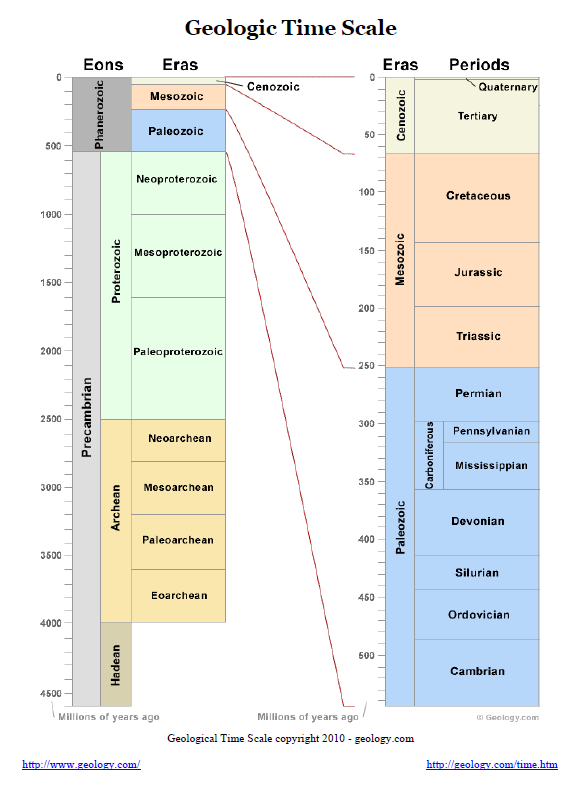- Building a worldwide sequence:
In England and other parts of Europe, scientists in the 1700s and 1800s used correlation by fossils to link together deposits of the same age.
In some places, the local sequence extended upward (to a younger time) or downward (to an older time).
The older or younger deposits could be further correlated with more and more formations, and the process repeated.
Regional names were given to time periods that were well-represented in particular places. For example:
- Deposits common in the Jura mountains of France were called Jurassic.
- Deposits common in the British county of Devon were called Devonian.
- Deposits common in northern Wales were called Cambrian after "Cambria", the Roman name for Wales.
- Coal-bearing deposits, common throughout Europe, mostly belonged to a coal-bearing age that was called Carboniferous, which means "coal-bearing".
- In several places, Carboniferous deposits were on top of Devonian deposits, so a Carboniferous time period was deduced to come just after a Devonian time period.
- A complete sequence:
By using the techniques described above, geologists were able to build a worldwide sequence, shown below.
NOTICE: This was still a relative dating sequence of "earlier" and "later" time periods, but nobody knew how long any time period lasted or how long ago it began.
(Absolute numerical dates, in millions of years, were not determined until the twentieth century.)

|